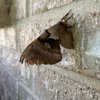2007 Ruby-Throated Migration Map
penny1947
17 years ago
Related Stories

GARDENING GUIDESBackyard Birds: Invite Entertaining Hummingbirds Into Your Garden
Hummingbirds — unique to the Americas — zip through open landscapes seasonally or year-round. Here’s how to attract them
Full Story
GARDENING FOR BIRDSWild Birds Transform a Woman’s Garden and Life
How Sharon Sorenson created a wildlife haven and became the Bird Lady of Southern Indiana
Full Story
GARDENING FOR BUTTERFLIESA Quick-Start Guide to Bird-Watching for Fun and Learning
Set out some seed and grab your field guide. Bird-watching is an easy, entertaining and educational activity for the whole family
Full Story
GARDENING GUIDESGreat Design Plant: Rhododendron Canescens
Have a damp, shady spot in your garden that needs a lift? This Southern U.S. native may be the solution
Full Story






mimidi
penny1947Original Author
Related Professionals
North New Hyde Park Landscape Architects & Landscape Designers · Simi Valley Landscape Architects & Landscape Designers · Alexandria Landscape Contractors · Cary Landscape Contractors · Forest Hills Landscape Contractors · Fountain Valley Landscape Contractors · Long Branch Landscape Contractors · Matteson Landscape Contractors · Oklahoma City Landscape Contractors · Pleasant Grove Landscape Contractors · Sammamish Landscape Contractors · Vancouver Landscape Contractors · Baileys Crossroads Landscape Contractors · Cave Spring Decks, Patios & Outdoor Enclosures · Estero Decks, Patios & Outdoor Enclosureskristin_williams
penny1947Original Author
CandyD
penny1947Original Author
kristin_williams
penny1947Original Author
mimidi
penny1947Original Author
mimidi
penny1947Original Author
kristin_williams
penny1947Original Author
kristin_williams
hummersteve
penny1947Original Author
penny1947Original Author
penny1947Original Author
cs7580
kristin_williams
penny1947Original Author
penny1947Original Author
kristin_williams
cs7580
kristin_williams